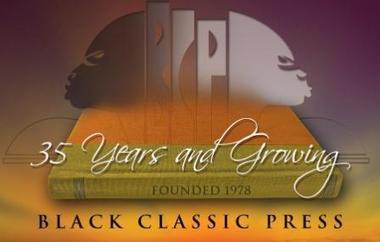The “conversation about race” that public figures periodically claim to desire, the one that is always either about to happen or is being prevented from happening, has been going on, at full volume, at least since the day in 1619 when the first African slaves arrived in Jamestown. It has proceeded through every known form of discourse — passionate speeches, awkward silences, angry rants, sheepish whispers, jokes, insults, stories and songs — and just as often through double-talk, indirection and not-so-secret codes.
What are we really talking about, though? The habit of referring to it as “race” reflects a tendency toward euphemism and abstraction. Race is a biologically dubious concept and a notoriously slippery social reality, a matter of group identity and personal feelings, mutual misunderstandings and the dialectic of giving and taking offense. If that is what we are talking about, then we are not talking about the historical facts that continue to weigh heavily on present circumstances, which is to say about slavery, segregation and white supremacy.
But of course we are still talking about all that, with what seems like renewed concentration and vigor. Nor, in a year that is the sesquicentennial of the Gettysburg Address and the semicentennial of the Rev. Dr. Martin Luther King’s “I Have a Dream” speech, are we simply looking back at bygone tragedies from the standpoint of a tranquil present. The two big racially themed movies of the year, “Lee Daniels’ The Butler” and Steve McQueen’s “12 Years a Slave,” are notable for the urgency and intensity with which they unpack stories of the past, as if delivering their news of brutal bondage and stubborn discrimination for the first time.
Francois Duhamel/Fox Searchlight Pictures
“12 Years a Slave,” directed by Steve McQueen, with, from left, Michael Fassbender, Lupita Nyong’o and Chiwetel Ejiofor.
And one of the strange effects of this country’s anxious, confused, hopeful and delusional relationship to its history of racism is that such narratives often do feel like news, or like efforts to overcome willful amnesia. The astonishing experiences of Solomon Northup, Mr. McQueen’s protagonist, a free man from Saratoga, N.Y., who was kidnapped and sold into slavery in the Deep South in 1841, are not being presented to the American public for the first time. Northup’s memoir was an antebellum best seller, nearly as widely circulated in abolitionist circles as “Narrative of the Life of Frederick Douglass” and Harriet Beecher Stowe’s “Uncle Tom’s Cabin.” A screen adaptation, directed by Gordon Parks and starring Avery Brooks in the title role (played by Chiwetel Ejiofor in Mr. McQueen’s version), was broadcast on PBS in 1984.
Warner Brothers Pictures
A scene from the mini-series “Roots” (1977) based on the novel by Alex Haley, with LeVar Burton.
Some of the film’s representations of cruelty — whippings, hangings, the sexual abuse of a young female slave named Patsey by her sadistic master — will also stir the memories of those Americans (like me) for whom “Roots” was a formative cultural experience. In 1977, when the mini-series, based on Alex Haley’s book, was first broadcast, it was heralded not only for its authenticity and comprehensiveness, but also for its newness. This was the first time such a story had been told in such breadth and detail, and with so much assembled talent. It continued, two years later, with “Roots: The Next Generations,” which was in some ways more groundbreaking for bringing attention to the often neglected decades of struggle and frustration that fell between the end of the Civil War and the birth of the modern civil rights movements.
Such stories, of course, do not stay told. The moral, economic and human realities of slavery — to keep the narrative there for a moment — have a way of getting buried and swept aside. For a long time this was because, at the movies as in the political and scholarly mainstream, slavery was something of a dead letter, an inconvenient detail in a narrative of national triumph, a sin that had been expiated in the blood of Northern and Southern whites.
D. W. Griffith’s “Birth of a Nation” may look now like a work of reactionary racism, but it is very much an artifact of the Progressive Era, embraced by President Woodrow Wilson and consistent with what were then understood to be liberal ideas about destiny and character of the American republic. In Griffith’s film (adapted from “The Clansman,” a best-selling novel by Thomas Dixon), the great crime of slavery had been its divisive and corrupting effect on whites. After Reconstruction, the nation was re-founded on the twin pillars of abolition and white supremacy.
Which is also to say on the basis of terror and disenfranchisement. But that side of the story was pushed to the margins, as was the harshness of slavery itself, which was obscured by a fog of sentimentality about the heritage and culture of the Old South. This was the iconography of “Gone With the Wind,” and while the pageantry of that blockbuster seems dated (to say nothing of its sexual politics), the old times it evokes are not forgotten, as Paula Deen might tell you.
The appeal of “Roots” lay partly in its status as a long-delayed, always-marginalized counternarrative, an answer to the mythology and romance that had shrouded popular representations of the American past. Much doubt has been cast on the accuracy of Haley’s book (which was marketed as a novel based on family sources), but the corrective power of the mini-series lay in its ability to reimagine the generation-by-generation sweep of American history from a perspective that had not before been synthesized on screens or public airwaves.
Kino Lorber Inc.
D. W. Griffith’s “Birth of a Nation” filmed in 1914.
In retrospect, “Roots” — which arrived on television a dozen years after the legislative high-water mark of the civil rights movement, in the more immediate wake of Richard Nixon’s Southern strategy and the first “Rocky” movie — may have succeeded so widely with white and black audiences because it simultaneously opened and closed the book on America’s racial history. There were a lot more American families like the one in the mini-series, but also with their own distinctive sagas of captivity, freedom, migration and resilience.
Those intimate stories had never been shared in such a wide and public fashion and the reception of “Roots” had a catalyzing effect on the imagination of many black writers. Until then, slavery had been something of a taboo in African-American literature, whose thematic center of gravity was in the urban North and whose theme was the black experience of modernity. But “Roots,” clumsy and corny as parts of it look now, helped beget radical and ambitious novels like Toni Morrison’s “Beloved,” Charles Johnson’s “Middle Passage” and Edward P. Jones’s “Known World.” They, along with artists like Kara Walker, took slavery as an imaginative challenge and an artistic opportunity.
But there was also a sense, after “Roots” and after “Beloved” claimed its place in the canon, that it had all been said. The white audience, moved by duty, curiosity and sincere empathy, could now move on. The horrors of the past, especially when encountered on television, cast a soothing and forgiving light on the present, where some of us could be comforted, absolved, affirmed in our virtue through the simple fact of watching.
Anne Marie Fox/Weinstein Company
“Lee Daniels’ The Butler” with Forest Whitaker.
But after such forgiveness, what knowledge? Post-“Roots,” a Hollywood consensus took shape that replaced the old magnolia-scented mythology with a new one, almost as focused on the moral condition of white people, but with a different political inflection. The existence of racism is acknowledged, and its poisonous effects are noted. But it is also localized, in time and geography, in such a way as to avoid implicating the present-day white audience. The racists are clearly marked as villains — uncouth, ugly, ignorant in ways that no one watching would identify with — and they are opposed by a coalition of brave whites and noble, stoical blacks. At the end, the coach and his players, the preacher and his flock, the maid and her enlightened employer shame the bigots and vindicate the audience.
There are variations on this theme, of course, but it is remarkably durable. It links, for example, “The Help,” Tate Taylor’s mild and decorous look at master-servant relations in Mississippi in the early 1960s (based on Kathryn Stockett’s novel), with “Django Unchained,”Quentin Tarantino’s violent and profane (if no less fantastical) examination of the same subject in the same state a little more than a century before. In both cases, a white character (Emma Stone’s writer; Christoph Waltz’s itinerant dentist) helps a black protégé acquire the ability to humiliate the oppressors. The weapon might be a book, a pie or a hail of gunfire, but the effect is the same. Justice is served and everyone cheers.
Some of us, perhaps including the white directors, are cheering for ourselves. Look how bad it used to be. Thank goodness — our own goodness — that it isn’t anymore. And of course it is never just the way it used to be. The abolition of slavery and the dismantling of Jim Crow really happened, against considerable odds and thanks to blacks and whites who took risks that later generations can only regard with awe and patriotic pride. The challenge is how to complete a particular story and leave the audience with the understanding that the narrative is not finished, that the past, to modify everyone’s favorite Faulkner quote, is not quite past.
Recent work by academic historians has emphasized the extent to which the exploitation and oppression of African-Americans — the denial of their freedom as workers and their rights as citizens — is embedded in the national DNA. Walter Johnson’s “River of Dark Dreams” shows how the Cotton Kingdom of the 19th-century Deep South, far from being a backward outpost of feudalism, was a dynamic engine of capitalist expansion built on enslaved labor. “Fear Itself,” Ira Katznelson’s revisionist study of the New Deal, shows how the great edifice of American social democracy, passed with the support of Southern Democrats, rested on and upheld the color line. And while neither white supremacy nor slavery has legal standing or legitimate defenders in America today, it would be hard to argue that their legacy has been expunged, or to confine their scope to the benighted actions of a few individuals.
Racism is part of the deep structure of American life, which is to say a persistently uncomfortable and also a persistently interesting subject, a spur to artistic creation as well as historical research. “The Butler” and “12 Years a Slave” may not be telling entirely new stories, but they are trying to tell them in new ways. Mr. McQueen infuses what looks like a conventional costume drama with the unflinching rigor that has characterized his previous films, “Hunger” and “Shame.” Mr. Daniels, the director of “Precious” and “The Paperboy,” blends melodrama, naturalism and brazen theatricality into a pageant that knowingly flirts with self-parody even as it packs a devastating emotional punch.
Andrew Cooper/Weinstein Company
“Django Unchained” (2012), directed by Quentin Tarantino, with Christoph Waltz, left, and Jamie Foxx.
Some of that impact comes at the end of “Lee Daniels’ The Butler,” which pointedly asks the audience to consider what has and has not changed. It is not much of a spoiler to say that Barack Obama is elected president, an event that is especially sweet and piquant for the title character, a black man who worked in the White House through the administrations of every president from Eisenhower to Reagan.
And it is certainly not a spoiler to note that in real life, Mr. Obama’s election and re-election have not ushered in an era of colorblind consensus. On the contrary, the fervor of the opposition to the president, and its concentration in the states of the former Confederacy, have at least something to do with the color of his skin. But Mr. Obama’s victories, and the resistance to them, have opened a new and complicated chapter in a continuing story, which means also a new interest in how the past looks from this particular present.
This chapter is being portrayed on screen by filmmakers like Mr. Daniels and Mr. McQueen, and written in journalism, fiction and memoirs by a rising generation of African-American writers that includes Ta-Nehisi Coates, Kiese Laymon and Jesmyn Ward. Ms. Ward’s new book, “Men We Reaped,” is a Southern coming-of-age story that evokes a long tradition of black autobiography going back to slave narratives and (in its title) the words of Harriet Tubman and an old chain-gang work song. Ms. Ward’s stories of black men in tragic circumstances seem both ancient and contemporary, echoing back to the lives of those less lucky than Solomon Northup and connecting with the fates of Trayvon Martin and Oscar Grant III, whose 2009 killing by transit police in Oakland is the subject of the recent film “Fruitvale Station.”
What links these episodes is the troubling reality that now — even now, we might say, with a black president and a culture more accepting of its own diversity than ever before — the full citizenship, which is to say the full acknowledged humanity, of African-Americans remains in question. The only way to answer that question is to keep talking, and to listen harder.



















